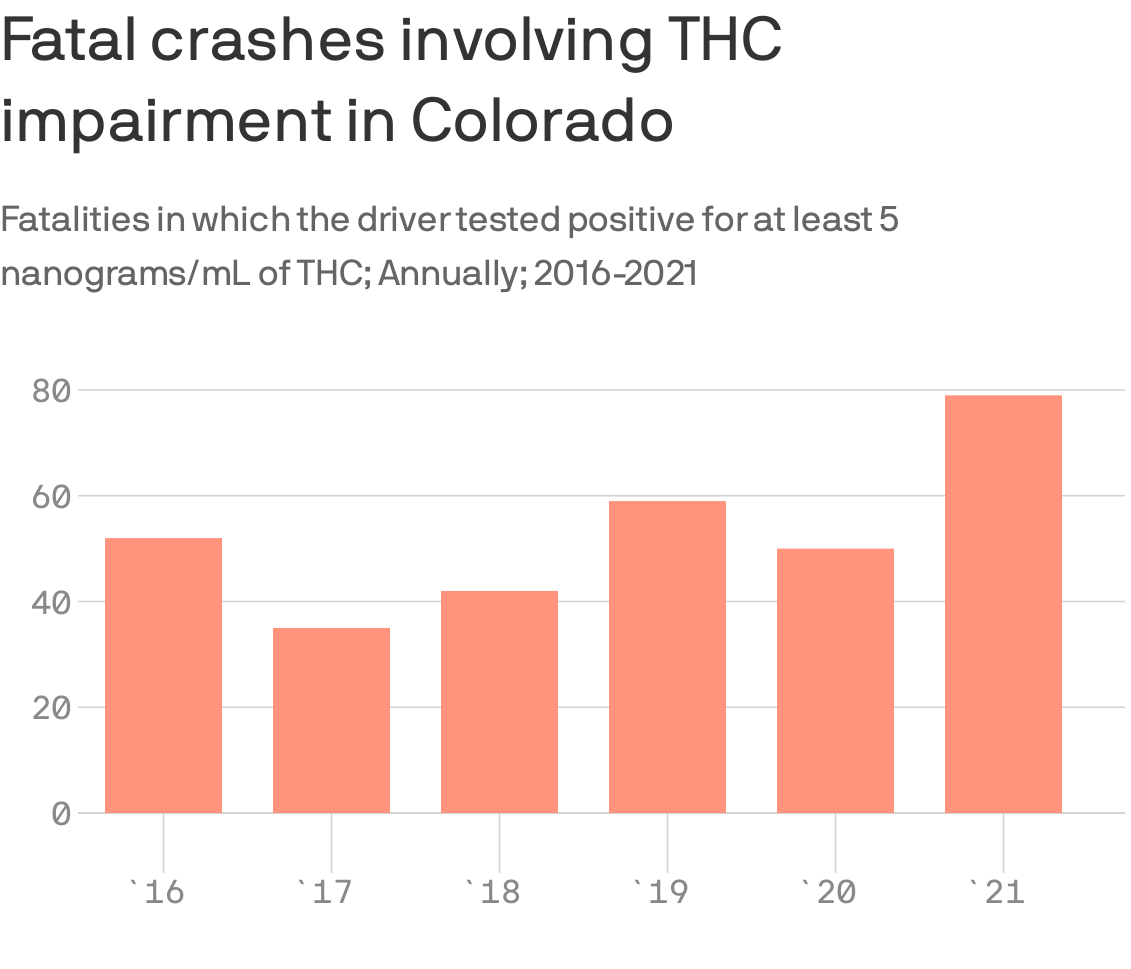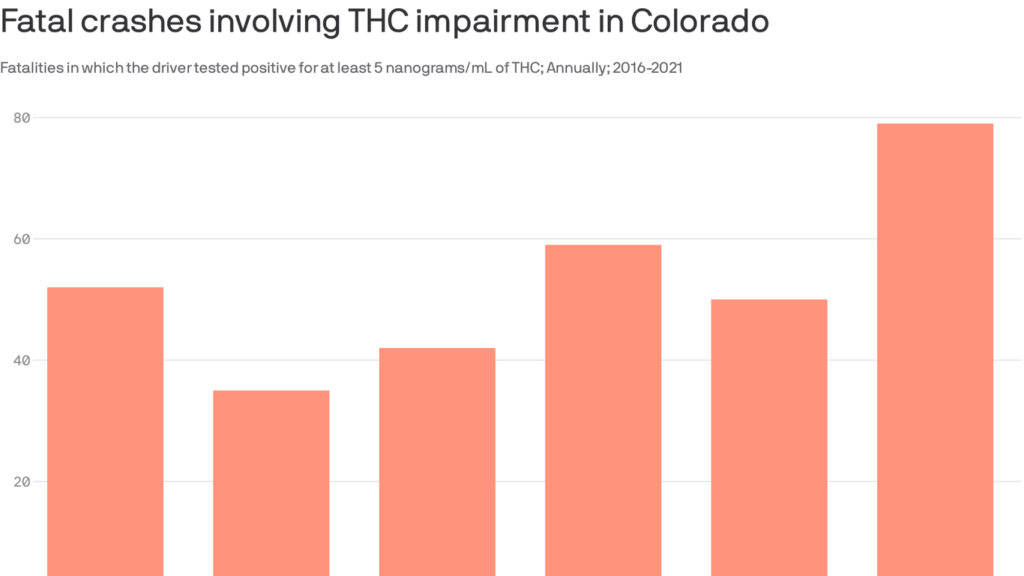
Colorado is partnering with the marijuana industry to combat cannabis-impaired driving.
Why it matters: 10 years after weed was first legalized in the state, fatal crashes involving the drug persist and appear to be rising.
What’s happening: As part of a 4/20 safe driving campaign, industry members met on Wednesday with officials from Colorado’s transportation agency to discuss how budtenders can act on the frontlines to prevent people from driving while high.
How it works: The state wants dispensaries to train employees on the signs of high customers — from glassy eyes and dilated pupils to short-term memory loss — and what they can do to keep them from driving.
- That includes budtenders asking how people are feeling, refusing to sell a product to customers, or offering to call them a ride home.
What they’re saying: As “trusted advisers” to their customers, it’s “critical” that budtenders are trained to know what impairment looks like and equipped to have “uncomfortable conversations” that could save lives, Truman Bradley, executive director of the Marijuana Industry Group, said at the Wednesday workshop.
By the numbers: In 2021, Colorado recorded 79 deaths involving a driver who tested above the legal limit for THC, which is above or equal to five nanograms per milliliter of blood. That’s the most fatalities since at least 2016 and a 58% spike compared to 2020, according to the latest state data provided to Axios Denver.
- A recent survey of more than 500 customers of Native Roots dispensaries found 41% of respondents may drive while under the influence of cannabis.
Yes, but: That same survey found that only 11% of respondents indicated they were “very likely” to drive while high while 59% said they were “not very likely” to do so.
Between the lines: Nearly all respondents — about 96% — indicated they typically consume cannabis at home rather than in a vehicle.
What’s next: To help keep people…
Read the full article here





